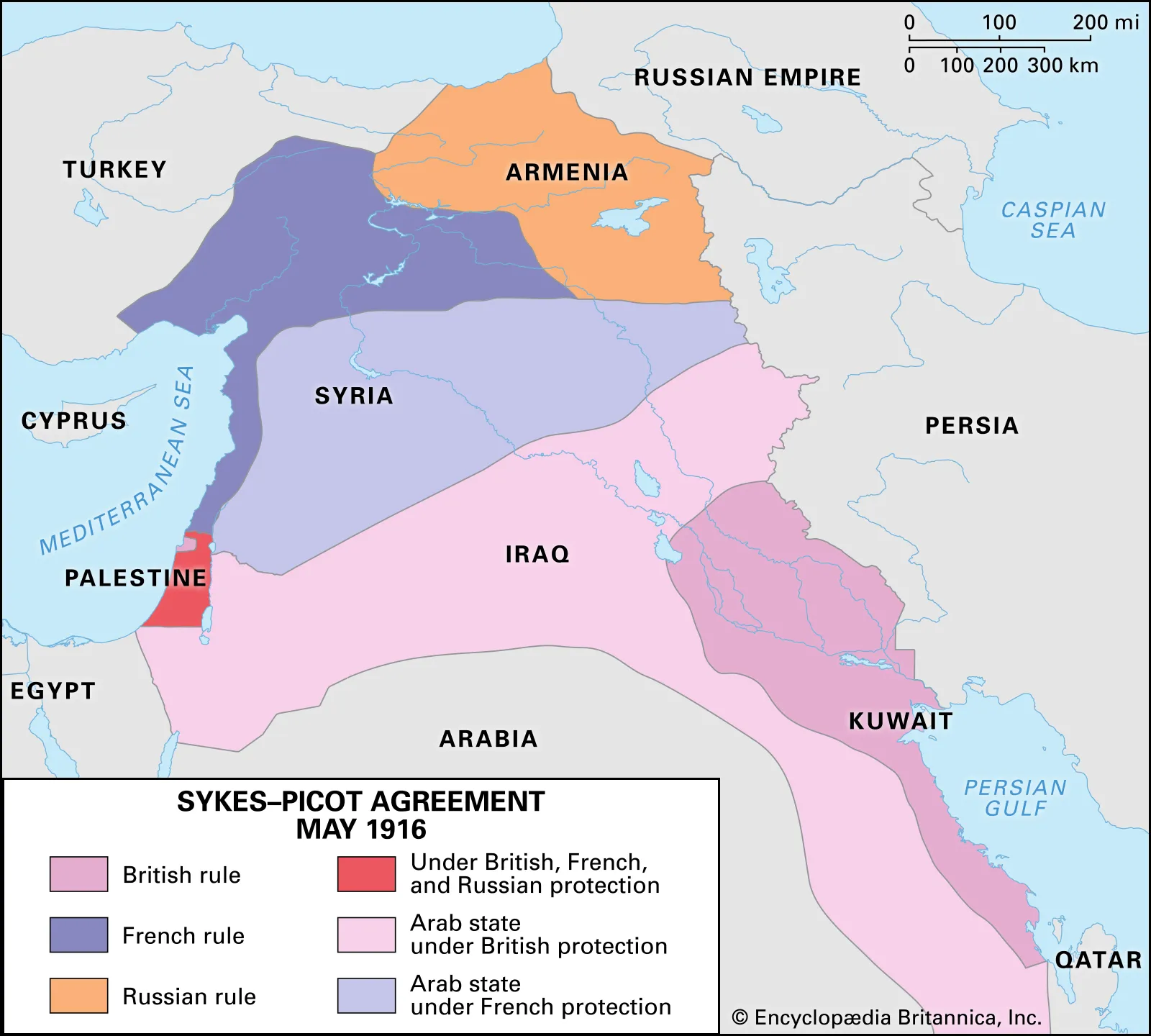The Secret Sykes-Picot Agreement (1916)
The artificial creation of the modern Middle East

The Secret of the Sykes-Picot Agreement: The Partition That Reshaped the Middle East and Sowed Divisions That Still Generate Suffering Today. A Tale of Artificial Borders Drawn at a Table and Broken Promises - Britannica.com
The Great War marked a period of profound change for the Middle East and the balance of power in the Arab world. The vast Ottoman Empire, which had ruled over numerous Arab populations from the Persian Gulf to Syria, from Egypt to Baghdad, came under assault by British forces, who, despite significant challenges, managed to make substantial inroads into Ottoman territory. The British advanced along two main fronts: one towards Palestine through the Suez Canal and the other towards Baghdad via Basra. However, the fate of the territories taken from Turkish control remained uncertain until the secret Sykes-Picot Agreement outlined their future.
Diplomats Mark Sykes and François Georges-Picot devised a map dividing the Middle East into spheres of influence: France would control Syria and Lebanon, while Britain would oversee Iraq, Jordan, and Palestine. Yet, this partition entirely disregarded the ethnic and religious diversity of the local population, laying the groundwork for future tensions. The plan remained secret until 1917, when the Bolsheviks, after the Russian Revolution, uncovered and exposed it to the world, revealing the deception. Arabs, who had anticipated independence from Ottoman rule as promised by the British, felt betrayed, and British support for the establishment of a Jewish state in Palestine further strained relations.
Today, the Sykes-Picot Agreement is seen as a symbol of political interference and manipulation by Western powers in the Middle East. The borders drawn without consultation of local populations split cohesive ethnic groups and merged distinctly different ones, creating tensions that continue to affect the region. This secret agreement not only redrew borders but left a legacy of divisions with which the Middle East is still grappling.
- Bruce Westrate, The Arab Bureau, – British policy in the Middle East (1916 -1920), Pensylvania State University Press, University Park 1992.
- Adam Zeidan, Sykes-Picot agreement, in Encyclopedia Britannica, accessed April 20, 2020.
- Laura Guazzone, Storia contemporanea del mondo arabo - i paesi arabi dall'impero ottomano ad oggi, Kindle edition, Milan 2016.
Toniatti Francesco - Professor of History and Oriental Studies, Master of Arts in International Relations
2025-08-19
Salvatore Ciccarello
